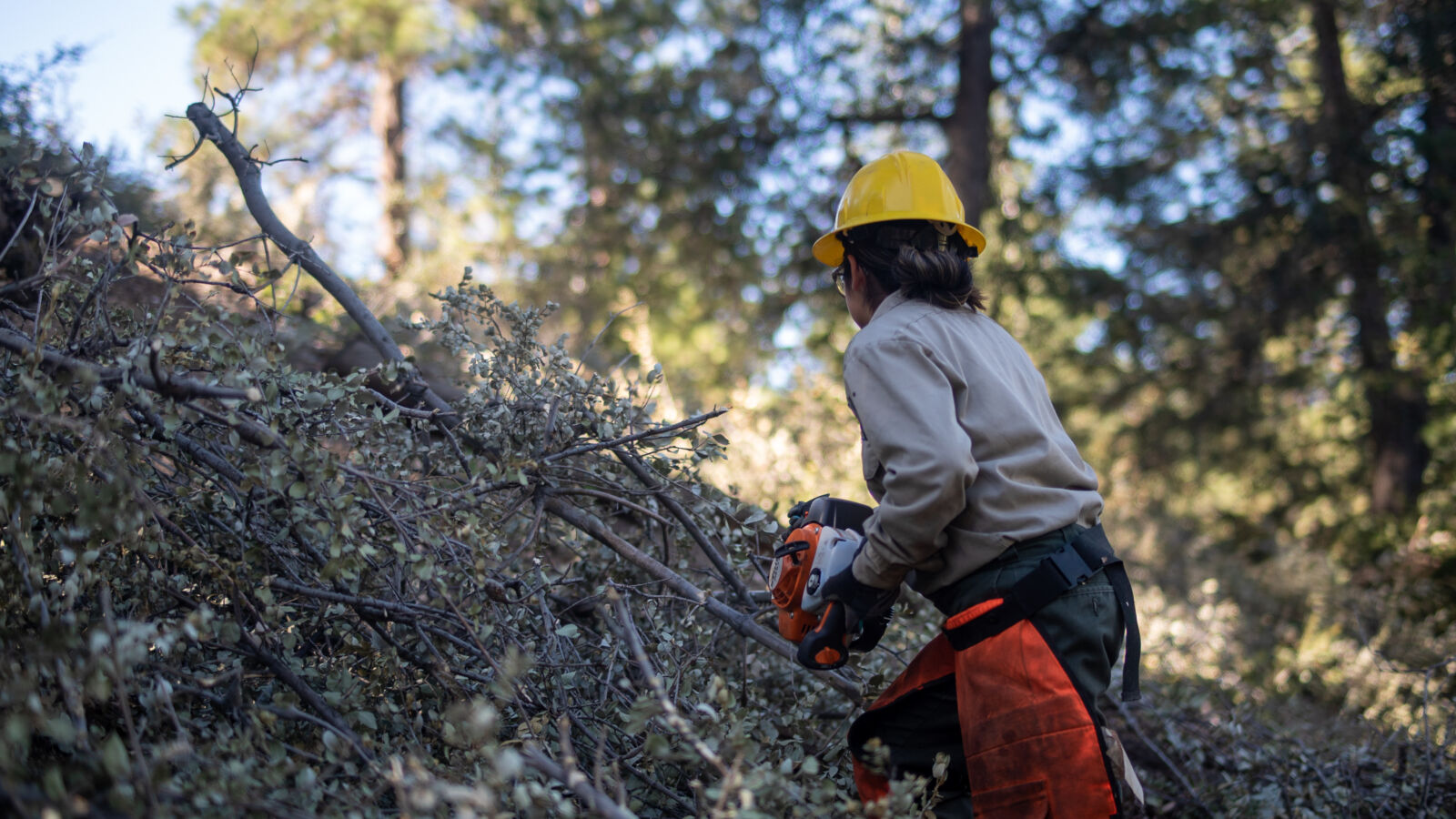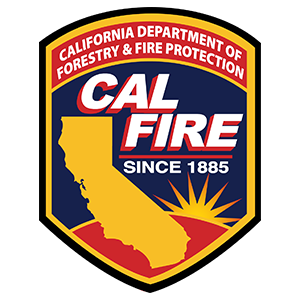The NFF and its partners are hard at work implementing forest health and fuel reduction projects across the San Bernardino National Forest. Last October, we discussed several fuel reduction and forest health projects underway to improve wildfire safety and resilience across the San Bernardino Mountains. The Southern California team has continued to make progress, thanks to support from the California Department of Forestry and Fire Protection (CALFIRE), as part of the California Climate Investments (CCI) Program CALFIRE.
In the Cranston Fire Burn Scar, the NFF completed 289 acres of tree release and began preparing a new unit for tree planting in 2024. Meanwhile, fuel reduction work has been completed on over 400 acres of the Grass Valley project area, helping to prevent future wildfires, thanks to support from both CALFIRE and Southern California Edison.
Mature conifers damaged by the 2018 Cranston Fire near the community of Idyllwild.
Excessive brush around the base of mature trees, increasing the likelihood of future wildfire.
The NFF also started a new project focused on maintaining the Pine Cove and Strawberry Fuelbreaks. The fuelbreaks span 265 acres of mixed chaparral, conifers, and oak woodlands near the community of Idyllwild. These fuelbreaks have been instrumental in protecting the communities from previous wildfires, such as the Cranston Fire.
The Pine Cove and Strawberry Fuelbreaks are both ‘shaded fuelbreaks,’ which means that healthy, mature trees are left in place, while the underbrush is cleared away. This helps to maintain the forest’s canopy, while ladder fuels and competing vegetation in the understory are removed to limit competition and reduce the likelihood of a wildfire climbing into the canopy from the ground.

Urban Conservation Corps member conducting brush removal for on the Angelus Oaks Project. Photo by Brian Cavallaro.
For fuelbreaks to be effective, they need regular maintenance to keep back encroaching brush. The Pine Cove and Strawberry Fuelbreaks have been critical to the protection of Idyllwild during recent wildfires. However, both fuelbreaks need additional vegetation treatments to ensure they remain effective. The NFF will be working with the Forest Service and contractors to reduce vegetation in the shaded fuelbreaks this year, ensuring they remain effective in protecting the community of Idyllwild.
More Information about the California Climate Investments Program
San Bernardino National Forest Post-Fire Restoration and Forest Health Project is part of the California Climate Investments, a statewide program that puts billions of Cap-and-Trade dollars to work reducing GHG emissions, strengthening the economy, and improving public health and the environment- particularly in disadvantaged communities. The Cap-and-Trade program also creates financial incentives for industries to invest in clean technologies and develop innovative ways to reduce pollution. California Climate Investments projects include affordable housing, renewable energy, public transportation, zero-emission vehicles, environmental restoration, more sustainable agriculture, recycling, and much more. At least 35 percent of these investments are located within and benefiting residents of disadvantaged communities, low-income communities, and low-income households, across California. For more information, visit the California Climate Investments website at www.caclimateinvestments.ca.gov.


Cover photo by Joyce Cheuk.
--------
You certainly know that wildfire is an important part of healthy forests, and the NFF works hard to keep it that way. We hope you enjoyed this blog post, and we invite you to become a vital part of our mission by making an unrestricted gift today. Your support goes to the programs, people, planning, and persistence that enable the NFF to work on the most challenging conservation issues we face. Please give today by simply clicking here. Thank you!

